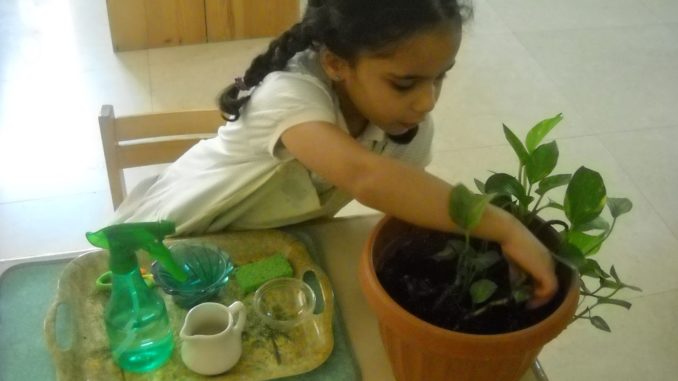
The information on varieties of plants with their special roles in improving the Indoor Environmental Status (IES) has been systematically presented below as a guideline for homemakers. From these home makers can select particular varieties of plants for indoors as per their functions, choice, affordability, ease in maintenance, availability etc.
- Use about one healthy plant with vigorous growth per 100 sq. feet.
- The more leaf surface a plant has the more air it can clean.
Varieties of Houseplants with their special Roles to improve IES
| S.No. | Category | Useful Plants |
| 1. | Temperature Reduction | Any healthy plant |
| 2. | Humidity Maintenance | Ferns, Ficus pumila, African violet |
| 3. | Noise Reduction | Peace Lily, philodendron, Dracaena |
| 4. | Dust Reduction | Rubber Plant, Pedilenthus, Syngonium |
| 5. | Oxygen enhancement at Night | Kalanchoe, Bromeliads, Mother in-law’s Tongue (Snake Plant) |
- One can use a variety of plants to combat a wide range of pollutants as follows:
Varieties of Houseplants to combat a wide range of Pollutants
| Pollutant | Source of Pollutants | Combating Plants |
| Formaldehyde | Insulation, fabrics, furniture, textiles, household cleaners | Pothos, Bamboo Palm, Dracaena massangeana, chrysanthemum, Spider Plant, Philodendron |
| Benzene | Tobacco smoke, solvents, synthetic, fibers, plastic, inks, detergents, rubber products | Dracaena marginata, Peace Lily, Chrysanthemum, Gerbera Daisy, English Ivy |
| Trichloroethylene | Dry cleaning solvents, inks, paints, varnishes, lacquers, adhesives | Gerbera Daisy, Peace Lily, Chrysanthemum, Dracaena marginata |
Table Source: Emery, 2005.
Special Guidelines based on the outcome of results of the Present Research:
On the basis of results of the present investigation the following guidelines are prepared for enhancing the Indoor Environmental Status-
Two types of tested houseplants, i.e., Foliage and Succulent Plants can be used indoors by the homemakers to enhance IES.
Among succulent plants four varieties Kalanchoe, Mother in-law’s tongue, Devil’s backbone, Boat Lily were used for their role in improving the IAQ. The succulent plants are advisable in the following conditions:
- To reduce the greater Room temperatures,
- To absorb the higher Suspended Particulate Matter,
- To decrease greater Carbon dioxide level, and
- To accoust the Sound disturbances.
Likewise, among foliage plants Alocasia, Syngonium, Money-plant, and Dumb Cane were used in improving the IAQ. The foliage plants are advisable in the following conditions:
- To regulate the required level of humidity,
- To maintain required Air flow rate,
- To enhance the concentration of Oxygen in indoor air.
Plants can be used in various combinations in numbers of both succulent as well as foliage plants as per the existing air quality. For example:
- If one wants to add more oxygen in the environment it’s better to use the foliage plants as compared to succulent plants.
- If somebody wants to reduce the concentration of SPM and regulate the required range of humidity then both the plants can be used in combination.
- Plants in combinations will look better aesthetically as it adds variety in the space at the same time result into better indoor air quality.
Source: My Ph.D. thesis-
Asnani, B. 2008. Impact assessment of houseplants on indoor environmental status in the residential buildings. Unpublished doctoral thesis. Department of Family Resource Management. College of Home Science. Maharana Pratap University of Agriculture & Technology. Udaipur. Rajasthan.

Very valid, pithy, suctcnic, and on point. WD.